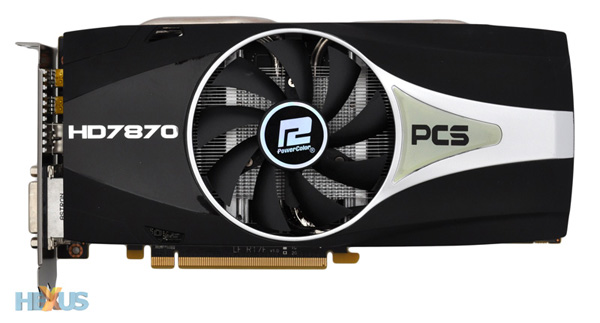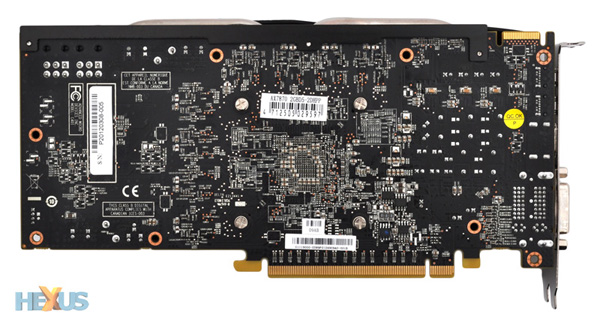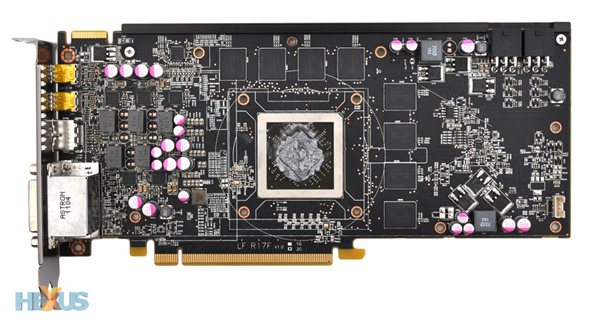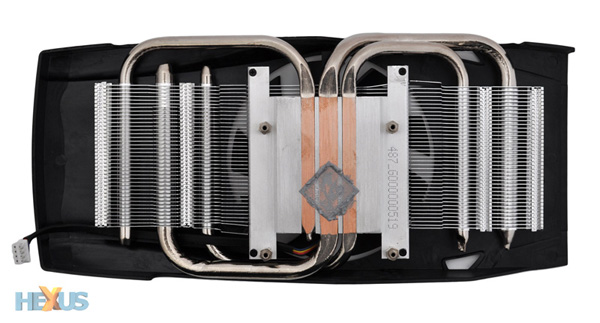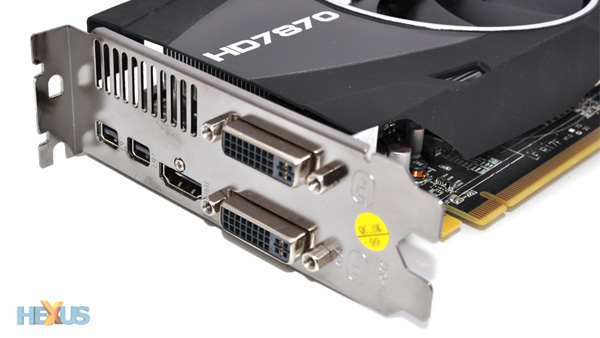PowerColor HD 7870 PCS+
Taking a different approach to HD 7870 cooling, PowerColor's card - priced at £285 and dubbed the HD 7870 PCS+ - features a single central fan measuring 92mm in size.
It isn't quite as eye-catching as Gigabyte's WindForce, but the PCS+ is smarter-looking and in our estimation more elegant. The black shroud is finished in a smooth velvet-like texture, and the cooler is sized to fit the card, resulting in a length of 245mm.
Maintaining the flow of the minimalist colour scheme, PowerColor's PCB is all-black and indistinguishable from AMD's reference design.
Once again, a single CrossFire link is available for two-way HD 7870 configurations, and power is sourced through two six-pin PCIe connectors.
So how about the overclock? Gigabyte's boost in out-the-box performance is limited to the Pitcairn XT core, but PowerColor opts to overclock both GPU and memory.
By default, the HD 7870 PCS+ is shipped with a core frequency of 1,100MHz (up from 1,000MHz) and a 2GB GDDR5 frame buffer clocked at an effective 4,900MHz (up from 4,800MHz).
There isn't a lot to separate the two cards in terms of price and speed, so it's likely to be the performance of the cooler that sets them apart. While Gigabyte's WindForce uses three fans and two heatpipes, PowerColor's PCS+ tackles heat dissipation with a single PWM fan and three heatpipes.
How much difference can a cooler actually make? We'll provide hard numbers later in the review, but the answer is quite a lot. One of these cards is ultra-cool but a tad loud, the other is ultra-quiet but a touch warm, but can you guess which is which?
Rounding off the last set of differences, PowerColor also takes a unique approach to HD 7870 outputs. In addition to the standard array of dual-link DVI, HDMI and two Mini DisplayPorts, the PCS+ card mirrors what was typically on offer from 6000-series cards by throwing in a single-link DVI connector as well.
In summary, Gigabyte's £290 card offers a 100MHz overclock on the core, three fans and two heatpipes. PowerColor's £285 card offers a 100MHz overclock on the core, a 100MHz overclock on memory, one fan and three heatpipes. Let's find out which is the better bet.






